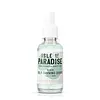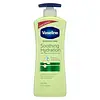What's inside
What's inside
 Key Ingredients
Key Ingredients

No key ingredients
 Benefits
Benefits

 Concerns
Concerns

 Ingredients Side-by-side
Ingredients Side-by-side

Water
Skin ConditioningDihydroxyacetone
Skin ConditioningAlcohol Denat.
AntimicrobialGlycerin
HumectantPolysorbate 80
EmulsifyingXanthan Gum
EmulsifyingErythrulose
TanningPropylene Glycol
HumectantTropaeolum Majus Flower/Leaf/Stem Extract
Skin ConditioningTocopheryl Acetate
AntioxidantAloe Barbadensis Extract
Skin ConditioningCitrus Grandis Peel Oil
MaskingCocos Nucifera Oil
MaskingEucalyptus Globulus Leaf Oil
PerfumingMentha Piperita Oil
MaskingPersea Gratissima Oil
Skin ConditioningSalvia Hispanica Seed Oil
MoisturisingSalvia Officinalis Oil
MaskingMethoxyphenyl T-Butylphenyl Propanediol
Skin ConditioningAgastache Mexicana Flower/Leaf/Stem Extract
Skin ConditioningAscorbic Acid
AntioxidantPropanediol
SolventEthylhexylglycerin
Skin ConditioningSodium Metabisulfite
AntioxidantParfum
MaskingSodium Hydroxide
BufferingPhenoxyethanol
PreservativeTriethylene Glycol
MaskingWater, Dihydroxyacetone, Alcohol Denat., Glycerin, Polysorbate 80, Xanthan Gum, Erythrulose, Propylene Glycol, Tropaeolum Majus Flower/Leaf/Stem Extract, Tocopheryl Acetate, Aloe Barbadensis Extract, Citrus Grandis Peel Oil, Cocos Nucifera Oil, Eucalyptus Globulus Leaf Oil, Mentha Piperita Oil, Persea Gratissima Oil, Salvia Hispanica Seed Oil, Salvia Officinalis Oil, Methoxyphenyl T-Butylphenyl Propanediol, Agastache Mexicana Flower/Leaf/Stem Extract, Ascorbic Acid, Propanediol, Ethylhexylglycerin, Sodium Metabisulfite, Parfum, Sodium Hydroxide, Phenoxyethanol, Triethylene Glycol
Water
Skin ConditioningGlycerin
HumectantStearic Acid
CleansingIsopropyl Myristate
EmollientParaffinum Liquidum
EmollientGlyceryl Stearate
EmollientGlycol Stearate
EmollientDimethicone
EmollientPEG-100 Stearate
Petrolatum
EmollientCetyl Alcohol
EmollientTapioca Starch
Phenoxyethanol
PreservativeMagnesium Aluminum Silicate
AbsorbentMethylparaben
PreservativeAcrylates/C10-30 Alkyl Acrylate Crosspolymer
Emulsion StabilisingParfum
MaskingPropylparaben
PreservativeDisodium EDTA
Xanthan Gum
EmulsifyingStearamide Amp
Aloe Barbadensis Leaf Juice Powder
Skin ConditioningCI 77891
Cosmetic ColorantWater, Glycerin, Stearic Acid, Isopropyl Myristate, Paraffinum Liquidum, Glyceryl Stearate, Glycol Stearate, Dimethicone, PEG-100 Stearate, Petrolatum, Cetyl Alcohol, Tapioca Starch, Phenoxyethanol, Magnesium Aluminum Silicate, Methylparaben, Acrylates/C10-30 Alkyl Acrylate Crosspolymer, Parfum, Propylparaben, Disodium EDTA, Xanthan Gum, Stearamide Amp, Aloe Barbadensis Leaf Juice Powder, CI 77891
 Reviews
Reviews

Ingredients Explained
These ingredients are found in both products.
Ingredients higher up in an ingredient list are typically present in a larger amount.
Glycerin is already naturally found in your skin. It helps moisturize and protect your skin.
A study from 2016 found glycerin to be more effective as a humectant than AHAs and hyaluronic acid.
As a humectant, it helps the skin stay hydrated by pulling moisture to your skin. The low molecular weight of glycerin allows it to pull moisture into the deeper layers of your skin.
Hydrated skin improves your skin barrier; Your skin barrier helps protect against irritants and bacteria.
Glycerin has also been found to have antimicrobial and antiviral properties. Due to these properties, glycerin is often used in wound and burn treatments.
In cosmetics, glycerin is usually derived from plants such as soybean or palm. However, it can also be sourced from animals, such as tallow or animal fat.
This ingredient is organic, colorless, odorless, and non-toxic.
Glycerin is the name for this ingredient in American English. British English uses Glycerol/Glycerine.
Learn more about GlycerinParfum is a catch-all term for an ingredient or more that is used to give a scent to products.
Also called "fragrance", this ingredient can be a blend of hundreds of chemicals or plant oils. This means every product with "fragrance" or "parfum" in the ingredients list is a different mixture.
For instance, Habanolide is a proprietary trade name for a specific aroma chemical. When used as a fragrance ingredient in cosmetics, most aroma chemicals fall under the broad labeling category of “FRAGRANCE” or “PARFUM” according to EU and US regulations.
The term 'parfum' or 'fragrance' is not regulated in many countries. In many cases, it is up to the brand to define this term.
For instance, many brands choose to label themselves as "fragrance-free" because they are not using synthetic fragrances. However, their products may still contain ingredients such as essential oils that are considered a fragrance by INCI standards.
One example is Calendula flower extract. Calendula is an essential oil that still imparts a scent or 'fragrance'.
Depending on the blend, the ingredients in the mixture can cause allergies and sensitivities on the skin. Some ingredients that are known EU allergens include linalool and citronellol.
Parfum can also be used to mask or cover an unpleasant scent.
The bottom line is: not all fragrances/parfum/ingredients are created equally. If you are worried about fragrances, we recommend taking a closer look at an ingredient. And of course, we always recommend speaking with a professional.
Learn more about ParfumPhenoxyethanol is a preservative that has germicide, antimicrobial, and aromatic properties. Studies show that phenoxyethanol can prevent microbial growth. By itself, it has a scent that is similar to that of a rose.
It's often used in formulations along with Caprylyl Glycol to preserve the shelf life of products.
Water. It's the most common cosmetic ingredient of all. You'll usually see it at the top of ingredient lists, meaning that it makes up the largest part of the product.
So why is it so popular? Water most often acts as a solvent - this means that it helps dissolve other ingredients into the formulation.
You'll also recognize water as that liquid we all need to stay alive. If you see this, drink a glass of water. Stay hydrated!
Learn more about WaterXanthan gum is used as a stabilizer and thickener within cosmetic products. It helps give products a sticky, thick feeling - preventing them from being too runny.
On the technical side of things, xanthan gum is a polysaccharide - a combination consisting of multiple sugar molecules bonded together.
Xanthan gum is a pretty common and great ingredient. It is a natural, non-toxic, non-irritating ingredient that is also commonly used in food products.
Learn more about Xanthan Gum